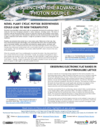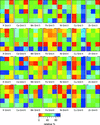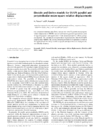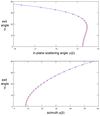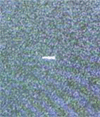issue contents
July 2006 issue
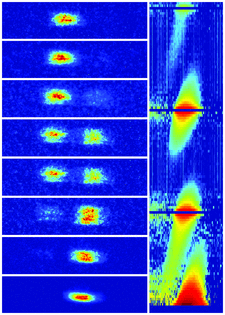
Cover illustration: Images of X-rays specularly reflected from an Al2O3 (012)-water interface (see Fenter, Catalano, Park and Zhang, pages 293-303). Individual images (left, with a logarithmic colour map with red indicating the highest intensity) show a characteristic splitting of the reflected beam associated with the tilting of the specular truncation rod of a mis-cut surface, as seen when images are compiled in a Qz-Q// reciprocal-space intensity map (right). The regions near the Bragg peaks are suppressed.
facility information
research papers
The use and application of charged coupled device area detectors is established for probing high-resolution specular X-ray reflectivity with an observed dynamic range of measured signals varying by ∼106.
Synchrotron-based X-ray fluorescence was used to examine the relative concentrations of metals in Arabidopsis thaliana seeds and as the basis of a high-throughput technique for the identification of metal mutants.
A Ge pixel array detector with 100 segments was applied to fluorescence X-ray absorption spectroscopy, probing the local structure of high-temperature superconducting thin-film single crystals (100 nm in thickness).
Einstein and Debye models for EXAFS parallel mean-square relative displacement are critically reviewed and extended to the perpendicular mean-square relative displacement.
A compact diffraction-reaction chamber has been employed to investigate the chemical dynamics at the combustion front of a selected series of refractory metal carbides and di-borides from their constituent element reactants as well as binary products from B4C as a reactant.
Theory is developed for emission of transition radiation (TR) by low-energy storage-ring synchrotrons. Since such TR is used mostly for performing X-ray lithography (XRL), the sensitivity of the XRL photoresist is also formulated.
Open  access
access
 access
accessThe focal sharpness of a Bragg–Fresnel lens (Laue diffraction geometry) can be improved by decreasing the height, and hence the width, of the Fresnel zones. The impact of this approach on the signal-to-background ratio of the focused spot and other properties is explored and found to be less than with ordinary Fresnel lens optics (in the absence of Bragg diffraction).
addenda and errata
Free 

current events
Free 



 journal menu
journal menu








